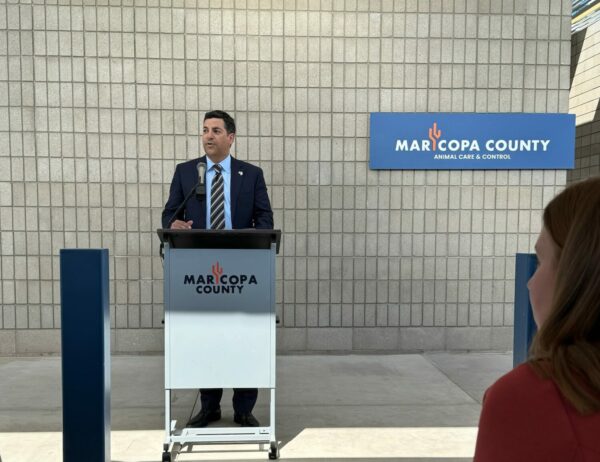By Rose Law Group Land Use and Zoning Attorney Jon GIllespie

Three primary facets of SB 1162, signed into law this past week, include the legislature attempting to shorten the zoning decision timeframe for all development projects in Arizona, seeking to call specific attention to the housing needs of Arizona communities, and appearing to bar government from joining a “zoning protest” to trigger a supermajority approval requirement. Notably, these rule changes apply only to cities and towns and not to counties.
Whether the requirements of the legislation will positively or negatively affect development projects will not be clear until the rules are implemented by the affected municipalities. First, it is likely that the review timeframe changes will have minimal effect on the actual timing of controversial development projects and an unintended negative outcome could be more “front-end heavy” submittal requirements for developers. Next, the housing needs assessment requirements likely will place additional burdens, and power, with municipal administrators to analyze housing needs within the community which will ultimately create data that can serve to embolden, or squash, private development visions for property within that community. Lastly, the “zoning protest” rule change appears to be favorable to proposed development projects because it removes the possibility of the government using its ownership of land to trigger supermajority approval requirements.
Zoning Timeframe
Under the new rules, municipalities are required to adjust their review procedures to create a more definitive “administrative complete” notice for applications submitted in their jurisdiction. Once applications are determined to be complete then the application must be approved or denied within 180-days of the completed submittal.
This requirement could have the effect of creating “front end heavy” submittals whereas previously administrators had more flexibility to adjust checklists throughout the review process. Now it appears that administrators may need to tighten their application checklists in order to ensure they are comfortable “starting the clock” on a submittal.
Notably, applicants are afforded the ability to seek extensions to the 180-day decision requirement. This is important within the context of controversial zoning projects because the primary developer goal is to get to “yes” and getting faster to a “no” most often does not benefit the developer. Developers will now need to even more clearly remain in communication with administrators to ensure that municipalities don’t unnecessarily rush their decision making including creating negative staff reports or scheduling public hearings before a project has been adequately assessed. The timing of citizen outreach will also be affected as administrators will likely move towards requiring neighborhood meetings and notifications earlier in the review process.
An additional complication is a common scenario where a review process reveals that a new, companion or separate entitlement application is necessary, in these cases it will be critical for applicants to openly communicate with administrators and elected officials.
The rules are not clear as to whether an applicant may voluntarily waive the 180-day decision timeframe. Having such a mechanism in place may prove important as an applicant considers the strategy for their project. In the end, it is very likely that multiple, and possibly continuous, 30-day extensions, allowed freely under the rules, will be requested so as to give applicants the time to juggle citizen outreach, developer consultant timeframes (i.e. how quickly can an architect or engineer revise plans to meet administrator comments), and portrayal of the project to elected officials.
Importantly, the 180-day timeframe period does not apply to land within Planned Area Developments. This will prove to be an important exception with the Planned Area Development tool being an ever increasing aspect of zoning land in Arizona, including certain municipalities almost exclusively zoning their land via Planned Area Development, such as the City of Chandler and City of Surprise.
Local land use counsel will be all the more imperative as stakeholders within the real estate industry adjust their expectations for the timing of rezoning approvals.
Housing Needs Assessment
Administrators are being tasked with creating robust information on existing and projected population growth, job growth, and inventory for residentially zoned land. New municipal reporting requirements are due for completion beginning on January 1, 2025, including a housing needs assessment to be published every 5 years and an annual report to be submitted to the Governor and legislature.
The housing needs assessment requires the municipality to issue an opinion on the need for additional residential housing units for rent and for sale within the community to meet projected population and job growth. Understandably, the new rules do not require municipalities to meet their projections for population growth or job growth, but the annual report does appear to create a standard that the municipality must be meeting, or specifically planning to meet, its existing housing needs.
The annual report requires detail on residential development activity in the community that year including the number of units initially proposed to the municipality, number of “net” proposed units then submitted to the municipality, and the total new units to receive various approval steps including entitlement, final plat, building permit and certificate of occupancy issuance.
The results of how various municipalities complete their assessments will undoubtedly vary but the reports could end up being either a significant “sword” for approval of additional specific housing types or a “shield” against approval of controversial proposals. The reporting requirements also seem to further equate already “in-place” zoning as the key indicator for housing availability as opposed to deferring to an individual development project’s merits, including both the parcel details itself and the engaged development team. These two aspects likely will create some developer angst with the new rules.
Additionally, while administrators are being tasked with additional work, they also are being empowered to support their planning objectives for the community. For example, a key aspect of the reports will be how municipalities treat large swaths of land currently zoned for rural one home per acre development (typically as a “holding” district for future development). Additionally, the complicated nature of analyzing the availability of a property as either for-sale or for-rent also adds a wrinkle which administrators will undoubtedly grapple with.
Under the rule change, smaller municipalities (population less than 30,000 persons) are exempt from reporting requirements including the requirement to assess whether their community meets housing needs across all various income levels. With today’s housing climate in Arizona, it is hard to imagine that these required reports will not shed important light on whether cities and towns need to be more supportive of housing options across different income levels and it seems to further etch “financial feasibility” as an important component in planning communities. How administrators and elected officials will utilize these key reports will undoubtedly shape the direction of residential development in Arizona.
Zoning Protest Calculation Change
Currently the “Zoning Protest” rules under ARS 9-462.04(H) allow for 20% of owners within the zoning area (essentially the area within 150 feet of the subject site) to attempt to trigger a supermajority vote requirement by the Town or City Council. The rule change appears to be favorable to proposed development projects because it removes the possibility of the government to use its ownership of land within the zoning area to join the 20% in triggering a supermajority vote requirement. Because much of the land within a zoning area is often government owned, such as right of way for roads, this rule
change results in more certainty for developers particularly when facing a recommendation for denial from municipal administrators.












